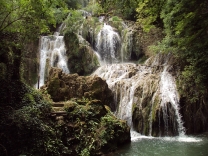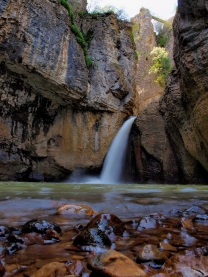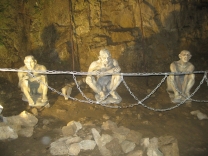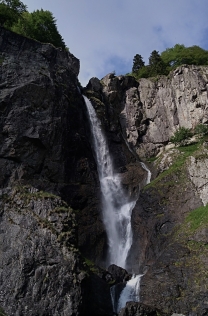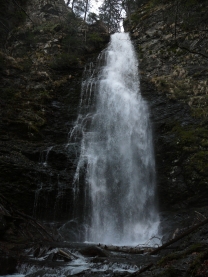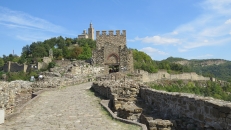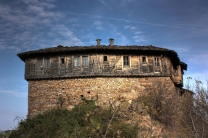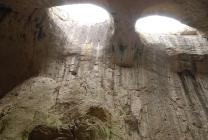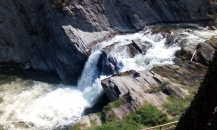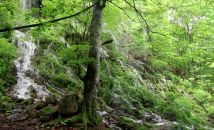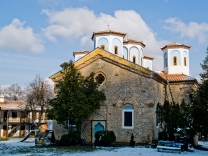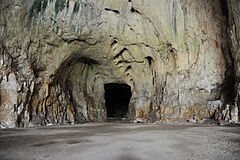
Devetashka cave
Cave and archaeological site in Bulgaria ‹ The template Infobox ancient site is being considered for merging. ›Devetàshka cave (Bulgarian: Деветашката пещера) is a large karst cave around 7 km (4.3 mi) east of Letnitsa and 15 km (9.3 mi) northeast of Lovech, near the village of Devetaki on the east bank of the river Osam, in Bulgaria. The site has been continuously occupied by Paleo humans for tens of thousands of years, served as a shelter for various faunal species during extensive periods and is now home to nearly 30,000 bats.
Location
Devetashka cave is located approximately 2 km (1.2 mi) from the village of Devetaki. A narrow path by the river leads from the village to the cave. It can also be accessed directly via Road 301 along a 400 m (1,300 ft) long dirt road and a concrete bridge. Now part of a public park, that includes a waterfall, the 2 km (1.2 mi) long karst cave formed from the dissolution of soluble rocks, characterized by sinkholes and an underground river. It is rich in speleothems, stalagmites, stalactites, countless rivulets and majestic natural domes.
The site is 35 m (115 ft) wide and 30 m (98 ft) high at the entrance. The cave widens after around 40 m (130 ft), forming a spacious hall with an area of 2,400 m2 (26,000 sq ft), a height of 60 m (200 ft) that can reach up to 100 m (330 ft). Several large openings in the ceiling allow daylight to lighten the vast interior, due to commercial use of the site during the 1950s.
Discovered in 1921, excavations began only in the 1950s and revealed almost continuous human occupation since the late Paleolithic. Earliest traces of human presence date back to the Middle Paleolithic around 70,000 years ago. The site also contained one of the richest sources of Neolithic cultural artifacts (6,000 to 4,000 BC).
Fauna
Besides significant archaeological findings, Devetashka cave provides a habitat for a wide diversity of faunal residents. During the breeding season of mammalian species in the cave from early June to the end of July, the site is entirely closed to visitors. Twelve species of protected amphibians and reptiles,...






